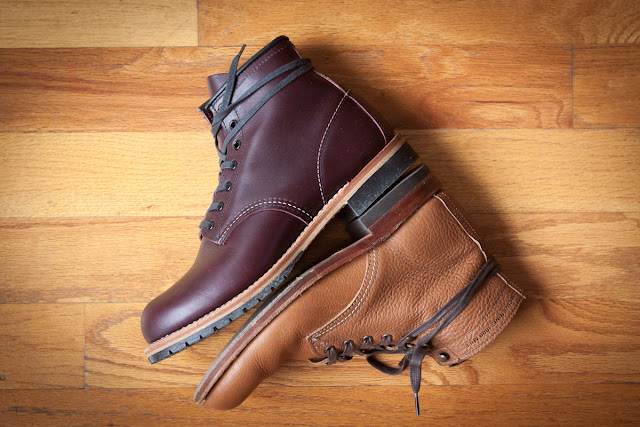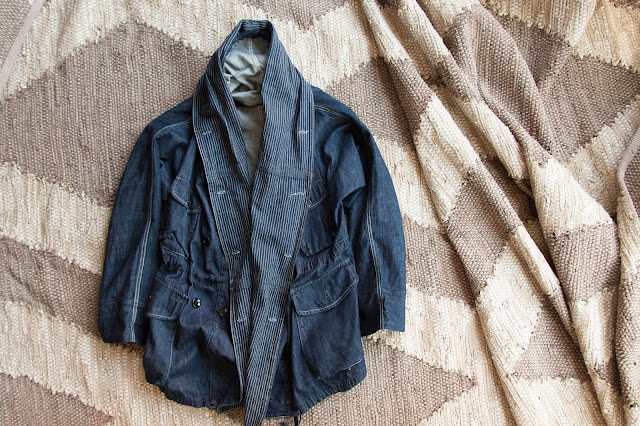Doing Background Research on the Difficult Product
If you're a real bargain hunter, it can be hard sometimes to find information on things you come across - detail shots, fit pics, size charts, etc., especially when buying things from past seasons on outlet and sales sites, the secondhand market, or brands that have a smaller footprint on the Information Superhighway (you don't call it that?). The process is usually as straightforward as googling a product name, but once in a while you can't find anything anywhere at first and the whole thing turns into a huge pain in your gonad. But when I'm having trouble finding some good references, there are a few tricks I use that I thought I'd share. Fair warning, a fair proportion of guys may find this process onerous and unworthy of your time. Fair enough - as always, your mileage may vary.
Use The Internet Archive: Wayback Machine
Depending on the site, vendors will often keep old product pages up for months or years. You'll also find merchant or third party blog sites that will occasionally showcase a product with fit pics, etc. simply by searching the product name. This is, by far, the easiest way to go about it if the information is readily available, and often you can get enough information just from this step alone to decide whether or not to make a purchase.
Unfortunately, it's also common for old items to have been scrubbed off of merchant sites and all you get is a "page not found" notification instead of that sweet sweet shoulder measurement you were pining for. The good news is that sometimes those pages have been archived on the Wayback Machine, an incredible tool which lets you enter in a web address and search through versions of that page that have been captured and snapshotted in time. Unfortunately, not all pages have been archived and sometimes an image or two won't load correctly, but more than once I've found the information I was looking for on captured versions of websites from seasons past. That Kapital Domingo coverall page shown above, for instance, no longer exists on the Kapital site, but on the archived site you can still look at and download all the pictures, look at the description, and access the size chart.
You can also often navigate through links on archived pages to other indexed pages that may be extinct now, so even if you can't find a specific product page from the get-go, you may be able to get there by starting at the main site home page and branching out from there (start your search at www.workwearmemes.com and then navigate from there to find your www.workwearmemes.com/men/sale/buffaloplaidunderwear).
Browse Seasonal Lookbooks
 |
| Vendor site calls this the "Henry Wool Blazer" |
 |
| RRL AW 2016 Catalogue with original item name |
Many designers publish seasonal lookbooks or collection galleries which are often mirrored on other style sites. I used this just the other day to find the real name for an RRL sport coat I bought that the seller had renamed on their site (and thus was not coming up on the worldwide web otherwise when I searched those terms). It's common for seasonal lookbook collections to list the specific items featured, at which point you have a jumping off point to base a new search that should yield better results. Sometimes I'll also use the Wayback Machine to find previous seasons' galleries which have since been deleted from the current site.
Don't Limit Yourself to English
Chances are that being a sole English speaker puts you in the mindset to automatically gloss over search results that look like this:
However, I've found that Asian sites and blogs (particularly Japanese ones) can be goldmines of information and often the best sources available - especially for clothing of their country's origin, as you might expect. The Japanese take great pains cataloguing detailed information, even on secondhand clothing that they sell on stuff like Yahoo.jp auctions. It's extremely rare to not find measurements listed for any article of used clothing on a Japanese site. Just a few short years ago, I'm not sure if any of this would have even been possible, but now web browsers like Google Chrome automatically translate web pages in other languages into a semblance of coherent English where you can find the technical information you are looking for if you're willing to dig a little and forgive some obviously horrible translations.
"Reverse" translation can also come in handy - translating a product name back into Japanese (if you hover over a translated section in Google Chrome it will give you the original characters) and copy/pasting that back into a search as a jumping off point.
For fit pics and a better idea of how things drape, I've found Wear.jp to be a great resource on Japanese brands, though if you're anything like me you'll usually have to imagine the clothes on someone a little taller and fatter to relate.
 |
| A dubious Google translation |
Search Google Images for Brand + Descriptors
If you're getting nowhere at the end of the day, simply searching Google Images with some guesses can have surprising results. Outlet sites and third party sellers commonly change product descriptions to something generic like "Ankle Boots" or "Button Down Shirt" - an issue I've run across not infrequently when I was trying to figure out what the hell my Buttero B101 boots were all about, the RRL sport coat above, and a Tomorrowland peaked lapel paper denim blazer that Barneys inexplicably renamed "Tweed Two-Button Sportcoat," to name a few - but I've found that searching Google + an educated guess at a description will usually yield at least one picture that matches what I was looking for if I take enough shots at it. With a little bit of luck, that picture link will bring you to a site with more detailed information - maybe a model number or the accurate name, and then we're off to the races.
Similarly, you may be able to find what looks like an official product photo on a random site and use Google Image Search to find more instances of that picture on other sites (simply drag the photo into the Google Image Search bar).
--------------------------------------
Why would anyone take the time to do any of this? That's a great question, and the answer probably lies somewhere between a mix of dogged stubbornness about always wanting to find the "best" thing and a smattering of mental illness. Ideally, you can alway get what you want at a killer price and at a reputable store that offers free shipping and risk-free returns. But this is the real world, and more times than not you will be forced to choose between a very good price and minimizing risk of buying the wrong size, having the fit be wonky, or occasionally finding that what you thought looked like a beautiful swan of a garment online is actually a fugly pigeon in person - one with a missing toe that has the general appearance of something that's been shaken in a hot paper bag for five minutes. For those times, having all the information at your disposal can mean the difference between trying on a garment in front of the mirror and congratulating yourself on a good buy, or immediately realizing you've made a huge mistake - too late.
Similarly, you may be able to find what looks like an official product photo on a random site and use Google Image Search to find more instances of that picture on other sites (simply drag the photo into the Google Image Search bar).
--------------------------------------
Why would anyone take the time to do any of this? That's a great question, and the answer probably lies somewhere between a mix of dogged stubbornness about always wanting to find the "best" thing and a smattering of mental illness. Ideally, you can alway get what you want at a killer price and at a reputable store that offers free shipping and risk-free returns. But this is the real world, and more times than not you will be forced to choose between a very good price and minimizing risk of buying the wrong size, having the fit be wonky, or occasionally finding that what you thought looked like a beautiful swan of a garment online is actually a fugly pigeon in person - one with a missing toe that has the general appearance of something that's been shaken in a hot paper bag for five minutes. For those times, having all the information at your disposal can mean the difference between trying on a garment in front of the mirror and congratulating yourself on a good buy, or immediately realizing you've made a huge mistake - too late.












Comments
Post a Comment